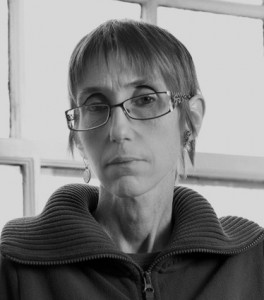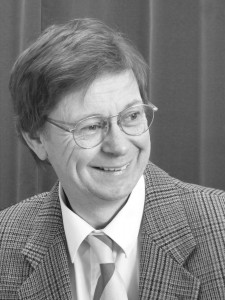22nd September 2015 (AGM at 10.30 am) (4th Tuesday) The Mystery of Holbein’s ‘Ambassadors’
This lecture only took place at the Mathematical Institute, see other events. All the other lectures take place at Magdalen College, see ‘where and when we meet’.
Hans Holbein was the first great mainland European painter to spend much time in England. The sophistication and skill which he brought with him had far reaching consequences for this island’s artistic development. His ‘Ambassadors’, one of the National Gallery of London’s greatest treasures, dates from a tradition in the arts when no object was without meaning and symbolism. Almost all of this meaning has, however, been lost to the modern observer. This lecture considers the tempestuous circumstances of the painting’s creation and the hidden messages concealed within it. It tells us much about the state of Europe at this time and the hopes and fears of its major players.
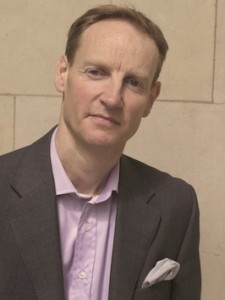 Lecturer: Mr Anthony Russell is a cultural historian, writer and artist. He has travelled much of the world combining painting with tour lecturing – principally to American university students on bespoke tours and the National Association of Decorative and Fine Arts.
Lecturer: Mr Anthony Russell is a cultural historian, writer and artist. He has travelled much of the world combining painting with tour lecturing – principally to American university students on bespoke tours and the National Association of Decorative and Fine Arts.
14th October 2015 (2nd Wednesday) Brangwyn the Polymath
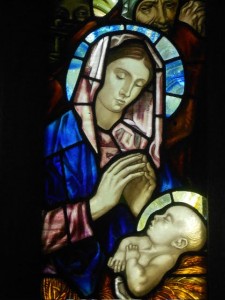 This lecture provides an overview of all the disciplines that Frank Brangwyn (1867 – 1956) was involved with: muralist, oil painter, water colourist, etcher, lithographer, designer of interiors, furniture, carpets, ceramics and stained glass. Starting with a brief history of the artist, the lecture will discuss the various disciplines which he mastered.
This lecture provides an overview of all the disciplines that Frank Brangwyn (1867 – 1956) was involved with: muralist, oil painter, water colourist, etcher, lithographer, designer of interiors, furniture, carpets, ceramics and stained glass. Starting with a brief history of the artist, the lecture will discuss the various disciplines which he mastered.
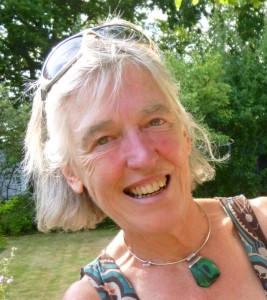 Lecturer: Dr Libby Horner is a freelance historian, curator, film producer, lecturer and writer. She is the world’s leading authority on the multi-talented artist Frank Brangwyn and is currently compiling the catalogue raisonne of all his work. Her ‘Frank Brangwyn: Stained Glass’, published in 2010, was the first ever catalogue raisonne to be produced as a DVD. Her ‘Brangwyn at War’ was published in 2014.
Lecturer: Dr Libby Horner is a freelance historian, curator, film producer, lecturer and writer. She is the world’s leading authority on the multi-talented artist Frank Brangwyn and is currently compiling the catalogue raisonne of all his work. Her ‘Frank Brangwyn: Stained Glass’, published in 2010, was the first ever catalogue raisonne to be produced as a DVD. Her ‘Brangwyn at War’ was published in 2014.
11th November 2015 (2nd Wednesday) Adventures in three dimensions: Twentieth century sculpture in Britain
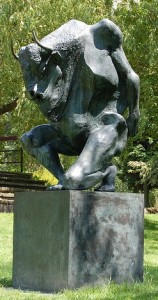 Modern sculpture is mysterious to many people, notoriously difficult and inaccessible. The works of Epstein, Moore, Hepworth, Frink and their contemporaries stand at the heart of our time, yet too often we are intimidated where we should be enthralled. The viewing of sculpture is an exploration, an adventure, something to be enjoyed. This lecture sets out to prove that we can all be explorers.
Modern sculpture is mysterious to many people, notoriously difficult and inaccessible. The works of Epstein, Moore, Hepworth, Frink and their contemporaries stand at the heart of our time, yet too often we are intimidated where we should be enthralled. The viewing of sculpture is an exploration, an adventure, something to be enjoyed. This lecture sets out to prove that we can all be explorers.
Lecturer: Dr Justine Hopkins has lectured regularly for Tate Britain, Tate Modern, V&A, National Gallery and National Portrait Gallery, as well as to Oxbridge and Bristol Universities. Her publications include ‘The Art of John Martin’, ‘Michael Ayrton: A Biography’ and articles for ‘Apollo Magazine’ and ‘Modern Painters’.
Dr Justine Hopkins has kindly sent a slide list from her lecture which took place on 11 November, and which you can download here: Sculpture 2014-15.
9th December 2015 (2nd Wednesday) In the bleak midwinter: Artists’ responses to snow
From the 15th century peasants drying their clothes, through the 17th century Frost Fairs on the Thames, to 19th century skaters in the Bois de Boulogne, this lecture will trace how artists have responded to the challenge of winter. Over 500 years of instructive shivering!
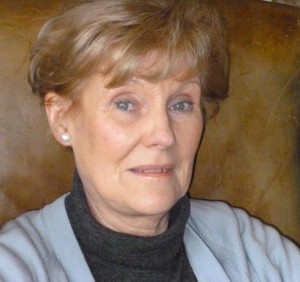 Lecturer: Miss Ann Clements has wide experience of lecturing both at home and abroad. Her earlier work includes cataloguing English watercolours and drawings for the Whitworth Art Gallery, Manchester, research for the Paul Mellon Foundation and university lecturing.
Lecturer: Miss Ann Clements has wide experience of lecturing both at home and abroad. Her earlier work includes cataloguing English watercolours and drawings for the Whitworth Art Gallery, Manchester, research for the Paul Mellon Foundation and university lecturing.
13th January 2016 (2nd Wednesday) We Three Kings: Music, Art, Legends and Poetry inspired by the Magi
The Bible gives us very little information about the wise men who came from the East bearing Christ the famous gifts of gold, frankincense and myrrh. By contrast, there is no shortage of music, poetry and art that has been inspired by these men. This lecture examines the impact of the Three Kings on the culture of later generations.
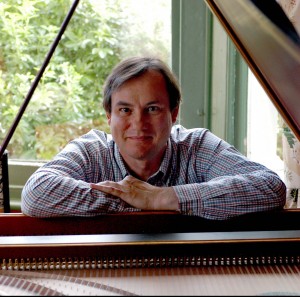 Lecturer: Mr Peter Medhurst appears in the UK and abroad as a musician and scholar, giving recitals and delivering illustrated lectures on music and the arts. He studied singing and early keyboard instruments at the Royal College of Music and at the Mozarteum in Salzburg.
Lecturer: Mr Peter Medhurst appears in the UK and abroad as a musician and scholar, giving recitals and delivering illustrated lectures on music and the arts. He studied singing and early keyboard instruments at the Royal College of Music and at the Mozarteum in Salzburg.
10th February 2016 (2nd Wednesday) Secret art in the passport – how to use it to fox the forger
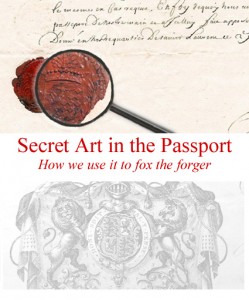 From the wax seal to the microchip, man has exploited the skill of the artist and artisan in his attempt to manufacture an unforgeable document. Taking you through three centuries of passport design, this lecture explains the overt and uncovers the covert to illustrate the defences built into the passport and the tricks the forger uses to defeat them. You will never see your passport in the same light again!
From the wax seal to the microchip, man has exploited the skill of the artist and artisan in his attempt to manufacture an unforgeable document. Taking you through three centuries of passport design, this lecture explains the overt and uncovers the covert to illustrate the defences built into the passport and the tricks the forger uses to defeat them. You will never see your passport in the same light again!
Lecturer: Mr Martin Lloyd has, since 2008, lectured to various groups, including NADFAS, U3A, National Trust, Gresham College and business groups. He previously worked for HM Immigration Service, and has broadcast on local and national television and radio.
9th March 2016 (2nd Wednesday) Nefertiti: Images of ancient Egypt’s most intriguing queen
Nefertiti is arguably the most famous queen of pharaonic Egypt. Her bust displayed in Berlin is iconic. She was the Chief Royal Wife of the Ancient Egyptian pharaoh Akhenaten (c1352-c1336 BC), and together they continue to fascinate. Intriguing changes appear in the art and religion of this period of Egypt’s history – peculiar representations of the royal family, and an attempt at monotheism in what was traditionally a polytheistic society. The female members of the royal family were exceptional. This lecture will examine the various roles (including political and cultic) played by Nefertiti and the other royal women of the time, and how these were expressed in stunning artistic representations.
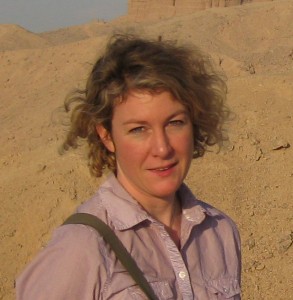 Lecturer: Ms Lucia Gahlin has extensive experience in Egyptological research, teaching, museum work and excavation, and a well-deserved reputation for making Egyptology exciting and accessible to a diverse audience.
Lecturer: Ms Lucia Gahlin has extensive experience in Egyptological research, teaching, museum work and excavation, and a well-deserved reputation for making Egyptology exciting and accessible to a diverse audience.
13th April 2016 (2nd Wednesday) The Scottish colourists: style and sophistication from the jazz age
The Scottish Colourists, the four artists, FCB Cadell, JD Fergusson, GL Hunter and SJ Peploe, are amongst the most admired of early twentieth century British painters. Each was born in Scotland in the latter part of the nineteenth century and each was attracted to France in their early careers. Although the four were friends, they did not constitute a formal group; the collective term by which they are known derives from their shared preference for vivid colour and fluid handling of paint. Their direct contact with French Post-Impressionism and early knowledge of the work of Henri Matisse and other Fauve artists encouraged them to produce paintings which are among the most innovative in British art of the period.
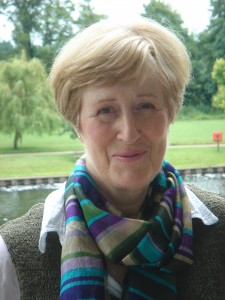 Lecturer: Ms Vivien Heffernan was a teacher and Head of Art Department from 1976 -1986. She is an Art History tutor for, among other institutions, the continuing education departments of Essex and Cambridge Universities and is a longstanding lecturer for the Open University. She has had wide experience as a freelance lecturer since 1988 and has lectured for affiliated societies of NADFAS in Australia and new Zealand. She is also a practising artist.
Lecturer: Ms Vivien Heffernan was a teacher and Head of Art Department from 1976 -1986. She is an Art History tutor for, among other institutions, the continuing education departments of Essex and Cambridge Universities and is a longstanding lecturer for the Open University. She has had wide experience as a freelance lecturer since 1988 and has lectured for affiliated societies of NADFAS in Australia and new Zealand. She is also a practising artist.
Following requests from members, Vivien Heffernan has kindly sent a list of pictures by Scottish Colourists discussed in her lecture.
18th May 2016 (3rd Wednesday) Rembrandt, Vermeer and Frans Hals – ‘Art in the garden of God’
Dutch art was quite different to any other art of the seventeenth century. It dealt with the real lives of people: at times ordered, at others bawdy or self important and occasionally tragic. This lecture looks into why this is so. It shows how Holland achieved its independence through its bitter wars with Spain; how its new Protestant mentality allowed astonishing advances in science as Rembrandt shows in his portrait of Dr Tulp; how its merchant wealth is reflected in serene seascapes by Van de Velde and Van Goyen, its civic pride in the brilliant portraits of Frans Hals, and its insistence on moral order and well-scrubbed households in the enigmatic poetry of Vermeer. It’s a lecture that shows how art is the mirror of its age and how the age is preserved in its art.
Lecturer: Mr Douglas Skeggs read Fine Art at Magdalene College Cambridge and has been a lecturer on paintings since 1980. In that time he has given over 4000 lectures to universities, colleges and art societies. He has lectured in Belgium, France, Germany and Spain, and has taken numerous tours around Europe. In addition he is a writer, artist and TV presenter.
8th June 2016 (2nd Wednesday) The splendour of Hampton Court Palace, including restoration and gardens
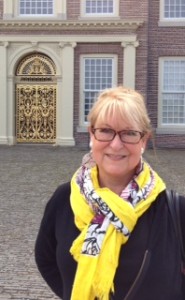 The lecture considers the Palace from the viewpoint of Henry VIII before moving on to the next major building at the Palace – that of Sir Christopher Wren for William and Mary. It was in these State Apartments that a terrible fire broke out in 1986. We look at images taken at the time of the fire and then at the painstaking restoration that followed. A selection of images showing the gradual restoring and replanting of the King’s privy gardens of 1701 completes the lecture.
The lecture considers the Palace from the viewpoint of Henry VIII before moving on to the next major building at the Palace – that of Sir Christopher Wren for William and Mary. It was in these State Apartments that a terrible fire broke out in 1986. We look at images taken at the time of the fire and then at the painstaking restoration that followed. A selection of images showing the gradual restoring and replanting of the King’s privy gardens of 1701 completes the lecture.
Lecturer: Ms Linda Collins is a lecturer for the Historic Royal Palaces and the National Trust, a freelance lecturer at Tate Modern and the National Gallery, London and an Independent lecture organiser.

